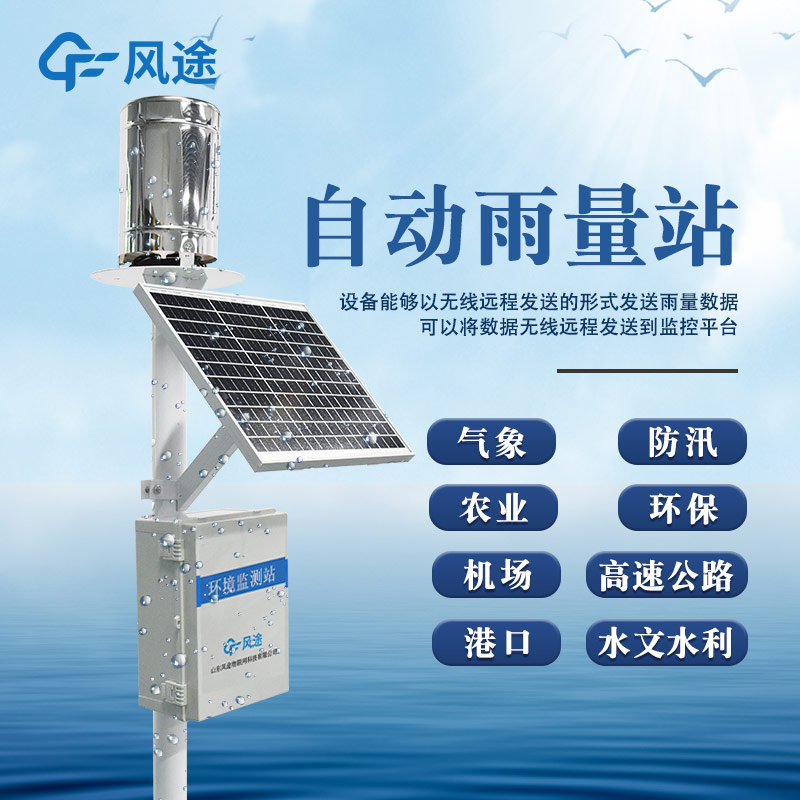Tianqiong Sensor IOT Technology Co., Ltd
Sales Manager:Ms. Emily Wang
Cel,Whatsapp,Wechat:+86 15898932201
Email:info@fengtutec.com
Add:No. 155 Optoelectronic Industry Accelerator, Gaoxin District, Weifang, Shandong, China

Sales Manager:Ms. Emily Wang
Cel,Whatsapp,Wechat:+86 15898932201
Email:info@fengtutec.com
Add:No. 155 Optoelectronic Industry Accelerator, Gaoxin District, Weifang, Shandong, China
time:2025-06-03 09:08:56 source:Weather Station viewed:184 time
A rainfall monitoring station is an intelligent system that uses high-tech means to obtain real-time rainfall data. It achieves this by deploying rain gauge stations in different regions, which act as the "eyes and ears" of the system, constantly monitoring rainfall conditions in their surrounding environments. The collected rainfall data is immediately transmitted to a data logger, which serves as the "brain" of the system. The data logger processes the chaotic raw data, organizing it into structured and useful signals.
Next, the processed data is quickly sent to a monitoring platform—acting as the "command center"—via a communication module, which functions as the "messenger." Upon receiving the data, the monitoring platform becomes active. Using Geographic Information System (GIS) maps, it marks the rainfall amounts at each monitoring point to create a rainfall distribution heatmap, allowing users to clearly see where heavy or light rainfall occurs. Additionally, the platform is highly intelligent: based on preset alarm rules, it will immediately send early warning messages via SMS, app notifications, emails, or other means (like an "alarm officer") to relevant personnel as soon as rainfall or water levels exceed safe thresholds, reminding them to take prompt countermeasures.
This system plays a critical role across multiple fields:
Meteorology: It provides precise rainfall data to meteorological departments, aiding more accurate weather forecasting and early warnings for severe weather events like rainstorms.
Hydrology: It real-time monitors rainfall changes in rivers, lakes, and reservoirs. By integrating data on water levels and flow rates, it supports water resource management and water conservancy project scheduling.
Flood Control and Disaster Reduction: It issues advance warnings for 山洪 (mountain floods), mudslides, and urban waterlogging, buying precious time for flood control and disaster relief efforts.
Agriculture: It assists farmers in reasonably scheduling irrigation based on real-time rainfall data, improving water resource utilization efficiency.
Transportation Management: It enables traffic authorities to adjust traffic strategies in a timely manner according to rainfall conditions, ensuring traffic safety.

Gridization is a technical means that divides the geographical space into several regular or irregular grid units. Through independent monitoring, analysis, and management of each grid, it achieves refined management of the entire region. In the field of environmental monitoring, grid-based manageme...
weather monitoring system is an unattended meteorological data acquisition system that uses ultrasonic principles to measure wind speed and direction. This system integrates data acquisition, storage, and transmission functions, featuring a compact structure and easy installation....
Negative Oxygen Ion Monitoring Station FT-FZ1 is an environmental monitoring device used to measure and display the concentration of negative oxygen ions in the air.The function of FT-FZ1 is to automatically monitor the concentration of negative oxygen ions in the air around the clock. Negative oxyg...
The Handheld Weather Station is a portable meteorological observation instrument that integrates multiple meteorological element monitoring functions, and the FT-SQ5A is a typical representative of it. It uses precise sensors and intelligent chips, and can accurately measure five meteorological elem...